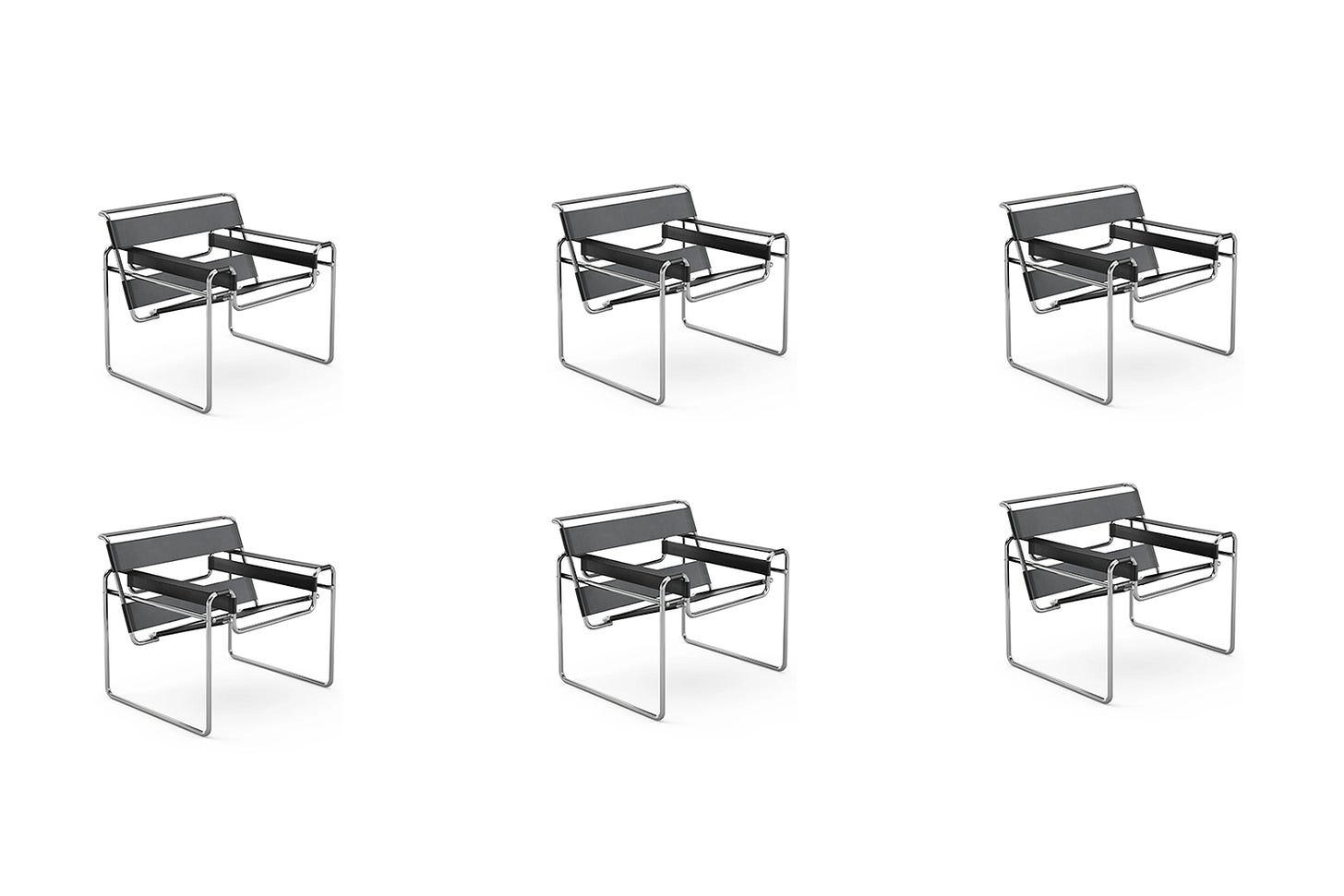How do you look this good at almost 100 years old?
Meanwhile, I’m closing in on 30 and already need reupholstering.
You ever meet someone, think they’re younger than you, only to find out they’re actually 10+ years your senior? Well, meet the Wassily Chair. Only it’s a little more than 10 years older than you and still looks as modern as the day it was made. How’s this possible? Time for a little history lesson.
What’s the deal with this chair?
Designed at the height of the Bauhaus era around 1925-1926 by Marcel Breuer, the Wassily Chair was conceived as a modern take on a 19th century leather club chair. It featured the revolutionary use of exposed and bent tubular steel (inspired by bicycles, no less), the bare minimum amount of leather for an enjoyable sitting experience, and encompassed the school’s core principles. To summarise: it’s a designer’s dream.
The Bauhaus school itself was founded in 1919 by architect Walter Gropius, based on the idea of revolutionising the art and design world by creating a Gesamtkunstwerk (German for comprehensive artwork). In essence, Gropius was looking to consolidate all art and design practices under one roof - which is exactly what he did. Not only did he create more formalised practices for design disciplines, the school created the core principles designers still practice to this day, including:
Form follows function
Create craftsmanship of the highest quality
Less is more
Use only true materials
While a lot of revolutionary works came out of this school before it was shut down in 1933 from Nazi-related pressure, it impacted a whole sleuth of major designers afterwards, including those working at Apple and Nike. But even with this legacy, the Wassily Chair’s steel still shines above the rest. It holds a sleek, understated elegance that manages to look as much at home in a hefty warehouse showroom as it does a lofty New York apartment.
What’s the deal with this Marcel Breuer?
Breuer came to the school in search of artistic training, having previously spent a short stint studying at the Academy of Fine Arts in Vienna. Gropius quickly recognised his talent, and Breuer would go on to have a lifelong career in the design world. He worked at Bauhaus as part of the facility, spent time designing in London, before settling in America for the remainder of his career.
Breuer’s biggest breakthrough in his furniture design practice came from recognising the implementation of tubular steel could dramatically reduce the need for additional materials. Essentially, he created chair skeletons that didn’t need fabricy flesh to live. While the majority of his career was spent as an architect, you have almost definitely sat on one of his chair designs before.
What’s the deal with this chair looking so damn (and I mean daaammnnn) good?
Aside from flawlessly following the school’s core principles - and downright being a piece of art - the Wassily Chair has been fortunate enough to exist outside the trendy sphere. Since social media’s inception, the design world’s seen an increase in the rise and fall of trends. Where we could once define eras in decades, our current cultural landscape means we consume more at a faster pace. While this might be fun from a design innovation standpoint, it means the lifespan of designs is significantly shorter - and furniture isn’t an exception to that rule.
Lorde once wrote in her notes app (yes I know, weird thread to pull here): The goal is to never go in or out of style. And she’s bloody right. True timelessness comes from standing on the edge of the cliff that is trendiness and not falling in like you’re Wile E. Coyote chasing that purple guy. While not all of Breuer’s designs have been able to avoid this (sorry Cesca Chair), the Wassily is still standing firmly on the edge.





